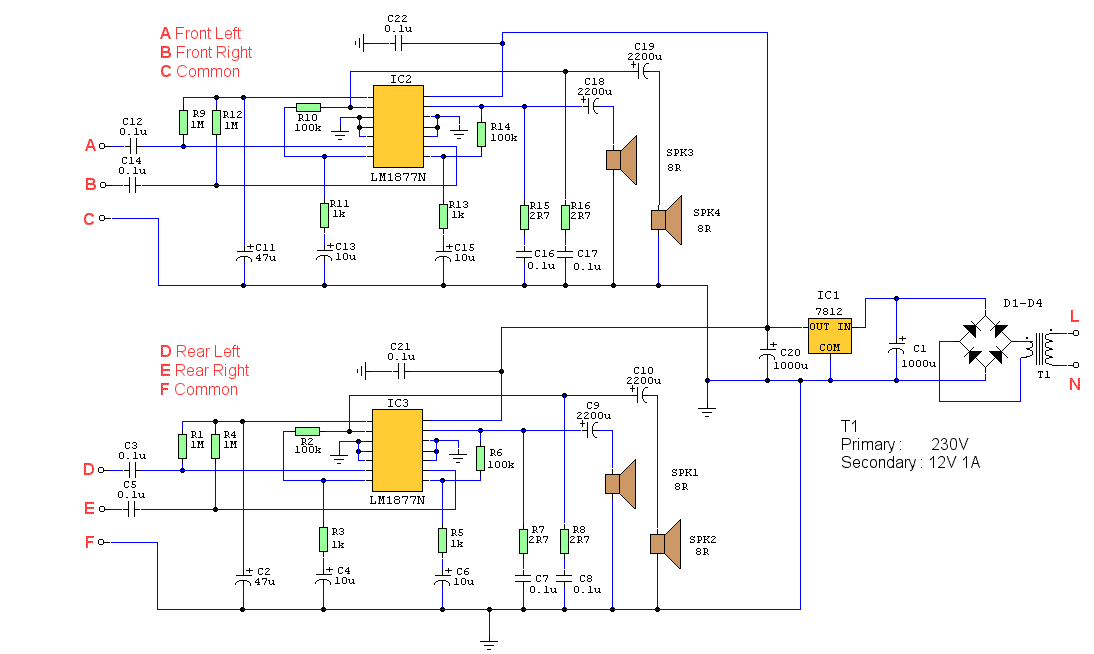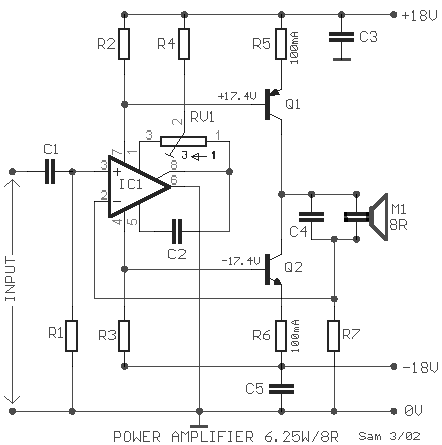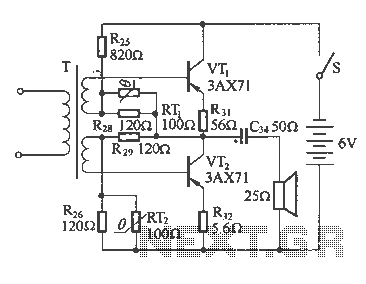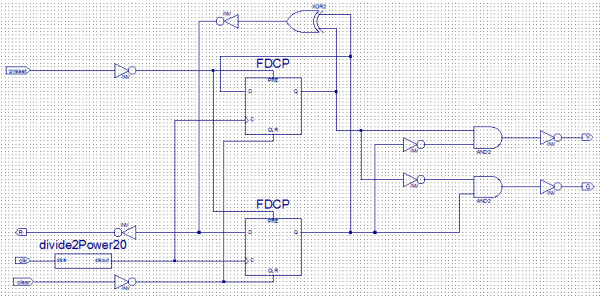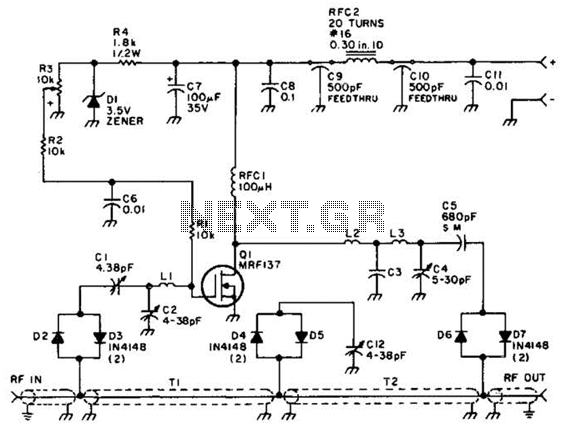
FFT audio amplifier design

For all the subsequent tests, a high-quality signal generator from BlackStar was utilized. The PicoScope trace displayed below illustrates a pure 1 kHz tone from the signal generator. It is important to note that while the screenshots below depict the Total Harmonic Distortion (THD), Spurious Free Dynamic Range (SFDR), and Signal-to-Noise and Distortion (SINAD) measurements in a separate window, these metrics are now integrated into the PicoScope program and are shown in the main window (refer to an example). The diagram below presents a basic power amplifier circuit. The output stage depicted employs the simple and commonly used emitter follower topology. The subsequent tests demonstrate how the quality of the signal from the output stage can be monitored. Modifications may then be made to the circuit, with any improvements documented. This output stage topology has a stage gain of slightly less than 1, allowing it to be easily positioned outside the feedback loop, as illustrated in the circuit below. Initially, the circuit was constructed as shown. The ADC-216 was connected to point A' in the circuit, and the signal generator was connected to the input. The PicoScope screenshot below reveals the signal at point A'. It is evident that the operational amplifier (op-amp) is performing adequately, as expected with a substantial amount of negative feedback applied. Upon examining the output at point B', excessive crossover distortion is clearly visible on the scope trace. The harmonic information also indicates a problem, with the third harmonic component being the most significant among the harmonics. The load resistor connected to point B' was 2.2kΩ. It is apparent that the output stage is experiencing severe crossover distortion effects. Monitoring point B while moving the output stage inside the feedback loop by connecting the inverting input of the op-amp to point B' shows a significant reduction in output stage distortion. Indeed, if observed solely on a conventional oscilloscope, the scope trace would not reveal any issues. This highlights the importance of the Pico Spectrum Analysis combined with the sensitivity of the ADC-216. The problem remains evident in the spectrum view. Reconnecting the ADC-216 to point A' while keeping the output stage in the feedback loop allows for an observation of the corrections the op-amp must apply to eliminate the error generated by the output stage. The op-amp tracks the sinusoidal signal for the positive and negative peaks of the waveform, but around the crossover points, it must exert considerable effort to compensate for the output stage error. It must quickly navigate the point where the output stage ceases to conduct. It is evident that the op-amp requires a significantly higher slew rate than what textbooks may initially suggest to compensate for the inadequately designed output stage. This complicates the design of earlier gain stages, making them more challenging and costly than necessary. Subsequently, the output circuit was enhanced by applying a bias voltage between the bases of the output devices using a simple diode drop technique. The view below illustrates the output at point B' once again. The addition of a small amount of biasing has improved the THD reading by nearly 10 dB. Observing point A' with this added bias voltage indicates that the op-amp does not require such a high slew rate since it does not need to work as hard to mask the output stage imperfections. This technical note has outlined a straightforward application where the performance of an amplifier output stage design can be assessed using the robust FFT spectrum plot in PicoScope. With experience, many issues can be identified from their characteristic spectrum plots, which might otherwise go unnoticed but can lead to subpar or colored sound reproduction.
The circuit described utilizes a basic power amplifier with an emitter follower output stage, which is known for its simplicity and effectiveness in driving loads. The emitter follower configuration provides a voltage gain of less than one, making it suitable for applications where a high input impedance and low output impedance are required. The circuit's design allows for easy integration into feedback loops, which is critical for maintaining signal integrity and minimizing distortion.
The initial setup involved connecting the ADC-216 to point A' to monitor the signal quality at the input of the op-amp. The observed performance indicated that the op-amp was functioning well under the influence of negative feedback, yet significant crossover distortion was noted at point B'. This distortion is a common issue in output stages where the transition between the positive and negative halves of the waveform can lead to non-linearities, especially if the output devices are not adequately biased.
To address the distortion, the circuit was modified by introducing a bias voltage between the bases of the output transistors, employing a diode drop technique. This adjustment improved the linearity of the output stage, as evidenced by the nearly 10 dB reduction in THD. The enhanced biasing allows the output devices to conduct more smoothly across the crossover region, thereby reducing the workload on the op-amp to correct for errors.
Furthermore, the use of the PicoScope for spectral analysis provided insight into the harmonic content of the output signal, revealing that the third harmonic was predominant. This information is crucial for diagnosing performance issues in audio applications, where distortion can significantly affect sound quality. The ability to visualize both the time-domain waveform and frequency-domain spectra enables engineers to diagnose and rectify design flaws effectively, leading to improved audio fidelity.
In conclusion, this circuit exemplifies the importance of careful design considerations in amplifier output stages. By utilizing advanced measurement tools and making strategic modifications, significant improvements in performance can be achieved, ultimately resulting in superior sound reproduction.For all of the following tests, we used a high quality signal generator from BlackStar. The PicoScope trace below shows a pure 1 kHz tone from the signal generator. Please note: although the screenshots below show the THD, SFDR and SINAD measurements in a separate window these are now included within the PicoScope program and are displayed in the main window ( see an example ). The diagram below shows a basic power amplifier circuit. The output stage shown is the simple and widely used emitter follower topology. The following tests show how the quality of the signal from output stage can be monitored. Modifications can then be made to the circuit and any improvements recorded. This output stage topology has a stage gain of just less than 1 so it can be easily moved outside the feedback loop as in the circuit below. Initially the circuit was constructed as above. The ADC-216 was connected to point A` in the circuit and the signal generator was connected to the input of the circuit.
The PicoScope screenshot below shows the signal at point A`. It is clear that the op-amp is doing a reasonable job as could be expected with such a large amount of negative feedback applied. If we now look at the output at point B`, we can see excessive crossover distortion clearly visible on the scope trace.
The harmonic information also indicates the problem with the third harmonic component being the largest of the harmonics. The load resistor connected to point B` was 2k2. It is obvious that the output stage is suffering from severe crossover distortion effects. If we continue to monitor point B but move the output stage inside the feedback loop by connecting the inverting input of the opamp to point B`, we notice a massive reduction in the output stage distortion.
Indeed, if you were looking at just the scope trace on a conventional scope, you would not see any problems. This is where the power of the Pico Spectrum Analysis combined with the sensitivity of the ADC-216 are crucial.
The problem is still evident in the spectrum view. If we connect the ADC-216 back to point A` but keep the output stage in the feedback loop, we can see what kind of corrections the opamp is having to apply in order to remove the error generated by the output stage. The opamp follows the sinusoidal signal for the positive and negative peaks of the waveform but around the crossover points, it has to work very hard to cover up the output stage error.
It has to quickly traverse the point where the output stage does not conduct. It is clear then that the opamp needs to have a much higher slew rate, than that which text books may initially suggest, in order to compensate for the poorly designed output stage. This makes the design of earlier gain stages much more difficult and expensive than they need to be. Next the output circuit was improved by applying a bias voltage between the bases of the output devices using the simple diode drop technique.
The view below shows the output at point B` again. It can bee seen that the addition of a small amount of biasing has improved the THD reading by almost 10 dB. If we look again at point A` with this added bias voltage, we can see that the op-amp does not require such a high slew rate since it does not have to work as hard to cover up the output stage imperfections.
This tech note has described a simple application whereby the performance of an amplifier output stage design can be evaluated using the powerful FFT spectrum plot in PicoScope. With some experience, many problems can be identified from their characteristic spectrum plots which might otherwise go unnoticed but lead to a poor or coloured sound reproduction.
🔗 External reference
The circuit described utilizes a basic power amplifier with an emitter follower output stage, which is known for its simplicity and effectiveness in driving loads. The emitter follower configuration provides a voltage gain of less than one, making it suitable for applications where a high input impedance and low output impedance are required. The circuit's design allows for easy integration into feedback loops, which is critical for maintaining signal integrity and minimizing distortion.
The initial setup involved connecting the ADC-216 to point A' to monitor the signal quality at the input of the op-amp. The observed performance indicated that the op-amp was functioning well under the influence of negative feedback, yet significant crossover distortion was noted at point B'. This distortion is a common issue in output stages where the transition between the positive and negative halves of the waveform can lead to non-linearities, especially if the output devices are not adequately biased.
To address the distortion, the circuit was modified by introducing a bias voltage between the bases of the output transistors, employing a diode drop technique. This adjustment improved the linearity of the output stage, as evidenced by the nearly 10 dB reduction in THD. The enhanced biasing allows the output devices to conduct more smoothly across the crossover region, thereby reducing the workload on the op-amp to correct for errors.
Furthermore, the use of the PicoScope for spectral analysis provided insight into the harmonic content of the output signal, revealing that the third harmonic was predominant. This information is crucial for diagnosing performance issues in audio applications, where distortion can significantly affect sound quality. The ability to visualize both the time-domain waveform and frequency-domain spectra enables engineers to diagnose and rectify design flaws effectively, leading to improved audio fidelity.
In conclusion, this circuit exemplifies the importance of careful design considerations in amplifier output stages. By utilizing advanced measurement tools and making strategic modifications, significant improvements in performance can be achieved, ultimately resulting in superior sound reproduction.For all of the following tests, we used a high quality signal generator from BlackStar. The PicoScope trace below shows a pure 1 kHz tone from the signal generator. Please note: although the screenshots below show the THD, SFDR and SINAD measurements in a separate window these are now included within the PicoScope program and are displayed in the main window ( see an example ). The diagram below shows a basic power amplifier circuit. The output stage shown is the simple and widely used emitter follower topology. The following tests show how the quality of the signal from output stage can be monitored. Modifications can then be made to the circuit and any improvements recorded. This output stage topology has a stage gain of just less than 1 so it can be easily moved outside the feedback loop as in the circuit below. Initially the circuit was constructed as above. The ADC-216 was connected to point A` in the circuit and the signal generator was connected to the input of the circuit.
The PicoScope screenshot below shows the signal at point A`. It is clear that the op-amp is doing a reasonable job as could be expected with such a large amount of negative feedback applied. If we now look at the output at point B`, we can see excessive crossover distortion clearly visible on the scope trace.
The harmonic information also indicates the problem with the third harmonic component being the largest of the harmonics. The load resistor connected to point B` was 2k2. It is obvious that the output stage is suffering from severe crossover distortion effects. If we continue to monitor point B but move the output stage inside the feedback loop by connecting the inverting input of the opamp to point B`, we notice a massive reduction in the output stage distortion.
Indeed, if you were looking at just the scope trace on a conventional scope, you would not see any problems. This is where the power of the Pico Spectrum Analysis combined with the sensitivity of the ADC-216 are crucial.
The problem is still evident in the spectrum view. If we connect the ADC-216 back to point A` but keep the output stage in the feedback loop, we can see what kind of corrections the opamp is having to apply in order to remove the error generated by the output stage. The opamp follows the sinusoidal signal for the positive and negative peaks of the waveform but around the crossover points, it has to work very hard to cover up the output stage error.
It has to quickly traverse the point where the output stage does not conduct. It is clear then that the opamp needs to have a much higher slew rate, than that which text books may initially suggest, in order to compensate for the poorly designed output stage. This makes the design of earlier gain stages much more difficult and expensive than they need to be. Next the output circuit was improved by applying a bias voltage between the bases of the output devices using the simple diode drop technique.
The view below shows the output at point B` again. It can bee seen that the addition of a small amount of biasing has improved the THD reading by almost 10 dB. If we look again at point A` with this added bias voltage, we can see that the op-amp does not require such a high slew rate since it does not have to work as hard to cover up the output stage imperfections.
This tech note has described a simple application whereby the performance of an amplifier output stage design can be evaluated using the powerful FFT spectrum plot in PicoScope. With some experience, many problems can be identified from their characteristic spectrum plots which might otherwise go unnoticed but lead to a poor or coloured sound reproduction.
🔗 External reference
